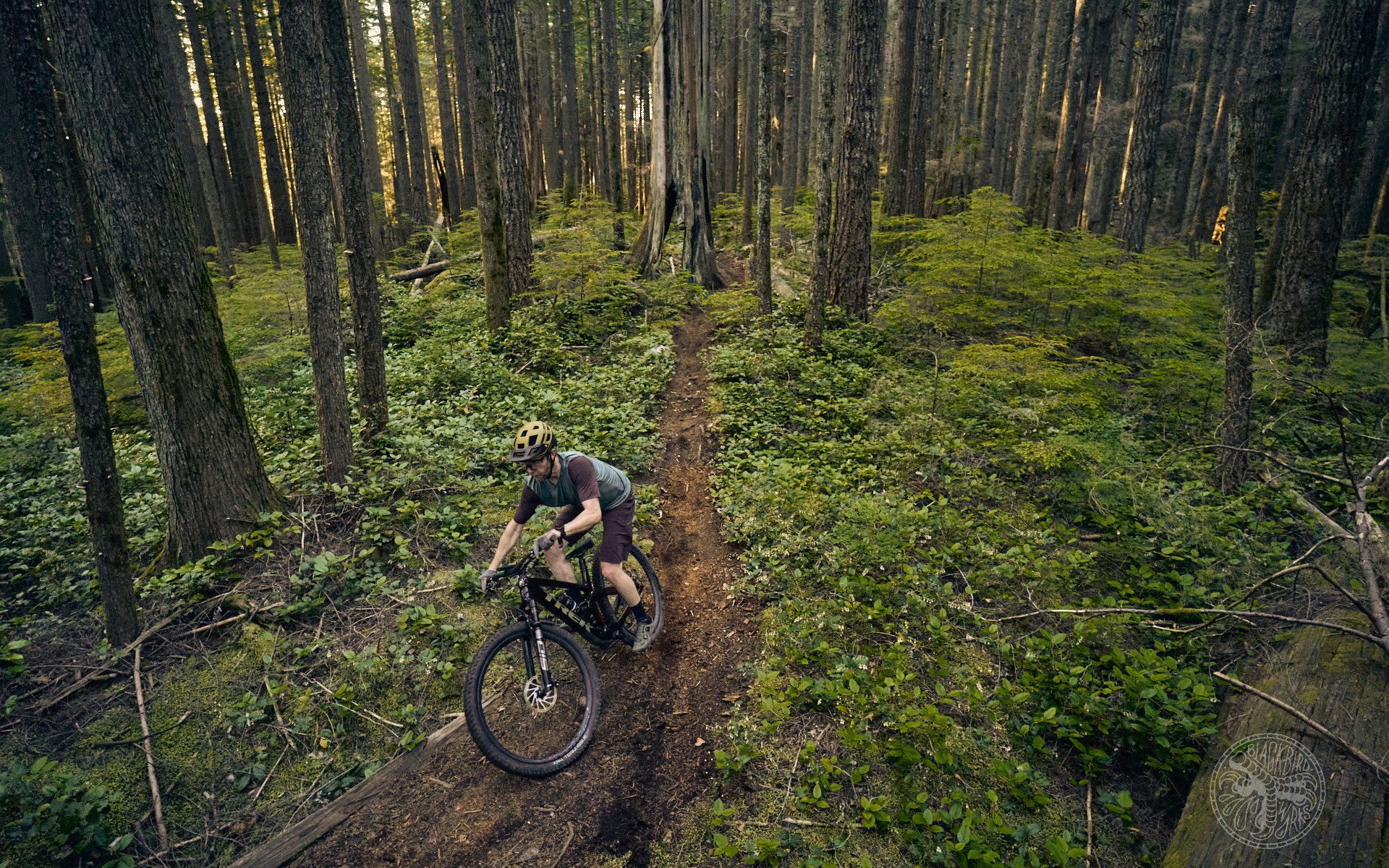
Review
Trek Top Fuel Review
Editor's note - Cooper's Trek Top Fuel review starts just a few paragraphs down. Before getting to that that, Cooper wanted to highlight a few notes about sustainability, high end mountain bikes, and how we use them. This is an SEO nightmare but a great way to put you in a certain frame of mind.
‘ESG’ – Environmental, Social, and Governance - isn’t a term you hear very often in the mountain bike world, at least not at the consumer level. But as these non-financial factors have rapidly become more and more relevant to investors and consumers, it shouldn’t be a big surprise to see the first major Sustainability Report in cycling to come out of one of the biggest brands – Trek. It's worth noting this is a Scope 3 report, meaning the most comprehensive, and we should be giving them a bit of kudos for putting this data out there. Some of the numbers don’t make great publicity, like 300,000 metric tonnes of CO2e/year produced by the company, but I’m a proponent of the idea that transparency can lead to accountability. I’m happy to see other cycling brands starting to follow suit, researching and publishing data around emissions.
Uncle Dave originally took a look at Trek’s report here – and there were a few key takeaways.
- Trek sells a lot of bikes. No, really. A lot. More than you’re thinking, and not the bikes you’re thinking of – ‘low end’ hardtails and the like outsell high end bikes by enormous margins.
- Carbon fiber frames create a lot more CO2 emissions. And, shocker, e-bike production releases even more. Carbon wheels are also bad.
- The rest of the bike is less relevant. Or at least, the delta between high and low end, rigid vs suspension, etc., is small potatoes stuff.
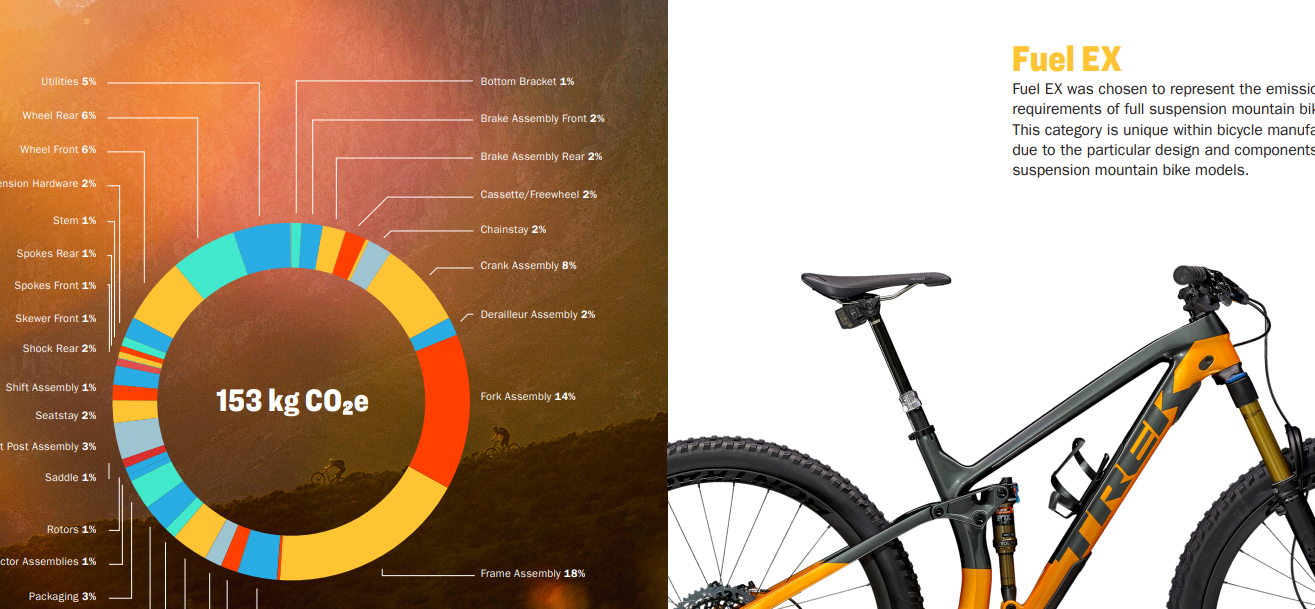
Trek lists the numbers for the Fuel EX - the slightly more aggressive sibling to the Top Fuel. Carbon fiber frame and wheels add significantly to the bike's emissions footprint - approximately 30% more CO2e per unit than the Marlin, an affordable aluminum hardtail that's an enormous volume seller for the brand.
I want to drill down a bit beyond Dave’s coverage, not on the nuances of the bikes themselves, but into a couple of Trek’s ’10 areas of focus to reduce our footprint’.
4) Establish and Protect New Trails
10) Shift Cycling Mode Share
Trek estimates that riding instead of driving for 430 miles (690 kilometres) saves roughly the same amount of CO2e that it took to make your bike*. However, if your initial thought is, “Awesome, I ride way more than 430 miles a year,” be careful. Driving your Tacoma to the trailhead and riding 430 miles does not count. It needs to be a mode shift – you need to be riding miles you were previously driving. You need to be riding those 430 miles to the trailhead, where hopefully Trek has helped improve your local trail network through point four above, and then riding to the brewery. Or, you could be pedaling up the hill instead of shuttling.
This brings us full circle to the Trek Top Fuel 9.9 XX1 AXS. Carbon fiber frame, carbon fiber wheels, ridiculous carbon fiber handlebar, the whole works.
*based on a vehicle getting 22 miles per gallon
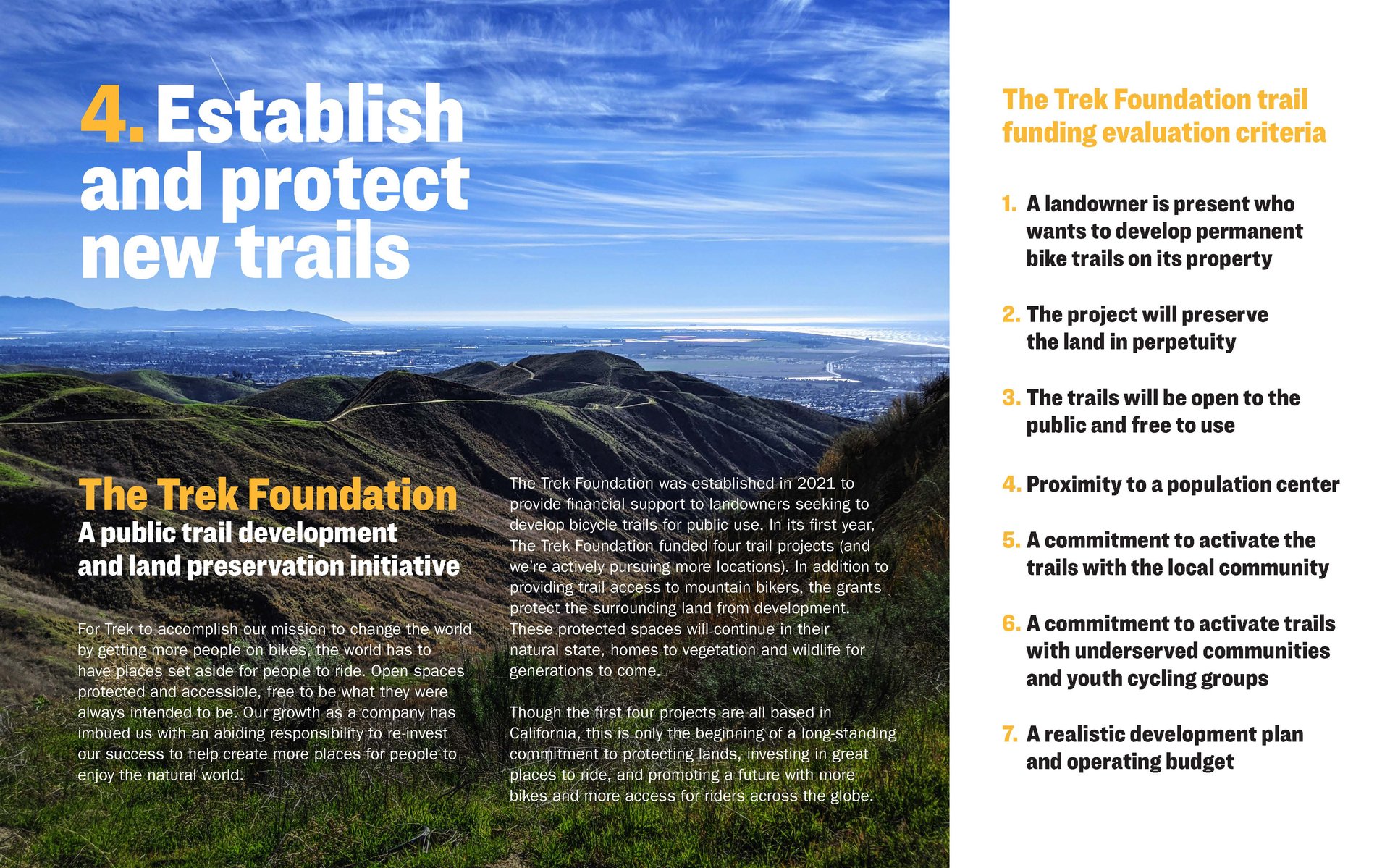
In an excerpt from their Sustainability Report, Trek recognizes the value of having trails nearby to population centers. Putting recreation close to where people live and work reduces the amount of time and energy spent getting to the trails for recreation, and increases the chances of folks riding to get there. The moral is, ride locally, ride to your ride, reduce your footprint.
Back to the Trek Top Fuel Review
I did a First Look at the Top Fuel here, covering all the changes from the previous Top Fuel, model range options, spec, geometry and hopefully most of the boring nuts and bolts questions you might have. The short version is it’s a 120mm bike Trek says is built for 60/40 uphill/downhill and retails for an eyewatering 13,974 CAD. My question now is, “Would I ride this bike the 10-mile round trip to the trails 43 times?” Riding anywhere on a MaxxGrip DD shod enduro bike is a slog – transitioning tarmac on the new breed of downduroshorecountry bikes is not.
I suspect many NSMB readers are like me – the real joy of most rides is the descending. So what we’re really seeking to answer is whether or not the Trek Top Fuel has made so many compromises in the way of efficiency and pedaling prowess you’ll chuck your Megatower in the back of your Unimog and drive to the trails instead of pedaling this over. Also, according to the comments section on my First Look piece, we'll cover how it compares to the Transition Spur which I first wrote about here, and compared to the Santa Cruz Tallboy IV here.
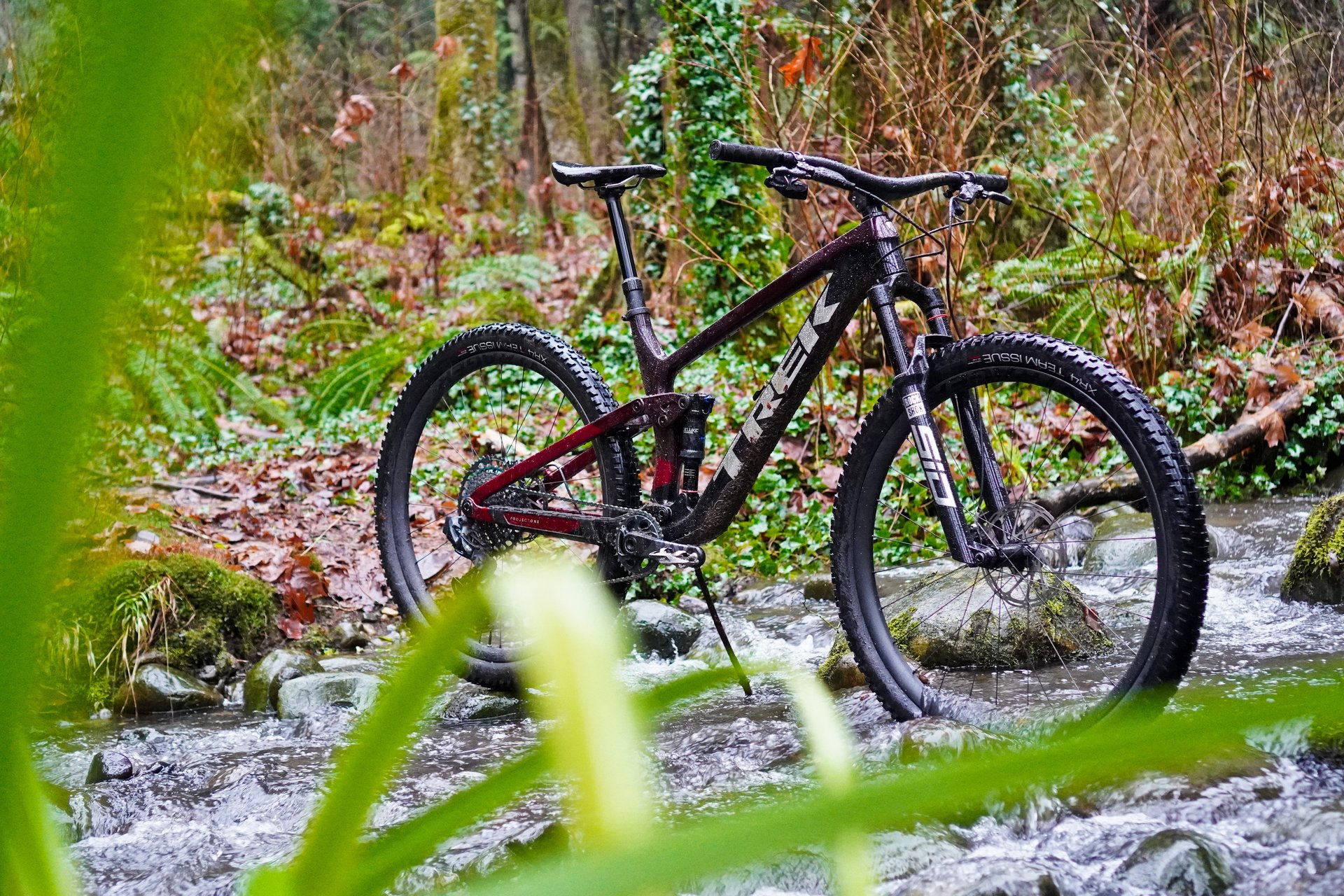
The Project One paintjob on this particular Top Fuel cuts a handsome profile. Photo: Cooper Quinn
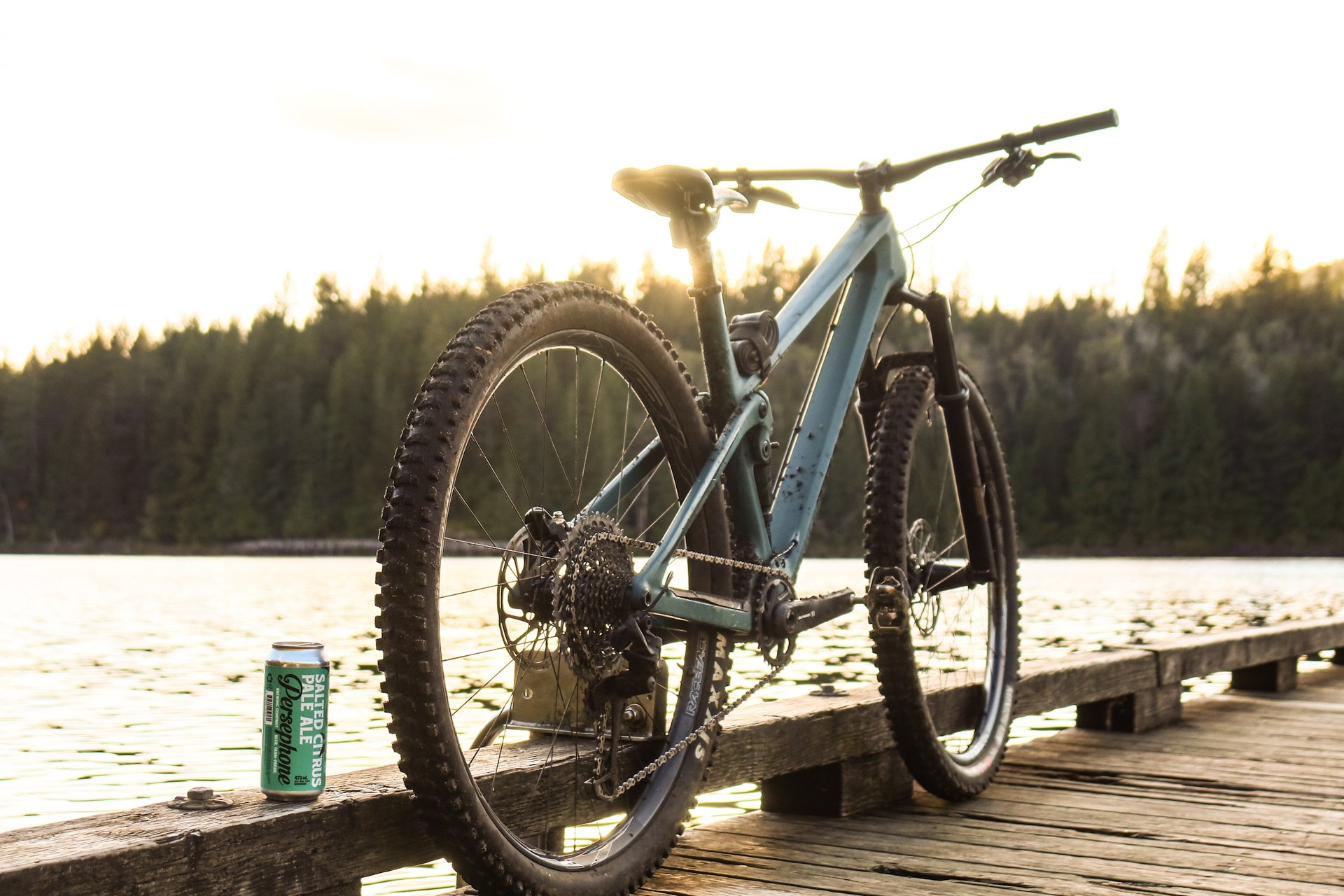
The Transition Spur and a fantastic beer, in one of my favourite places. Photo: Cooper Quinn
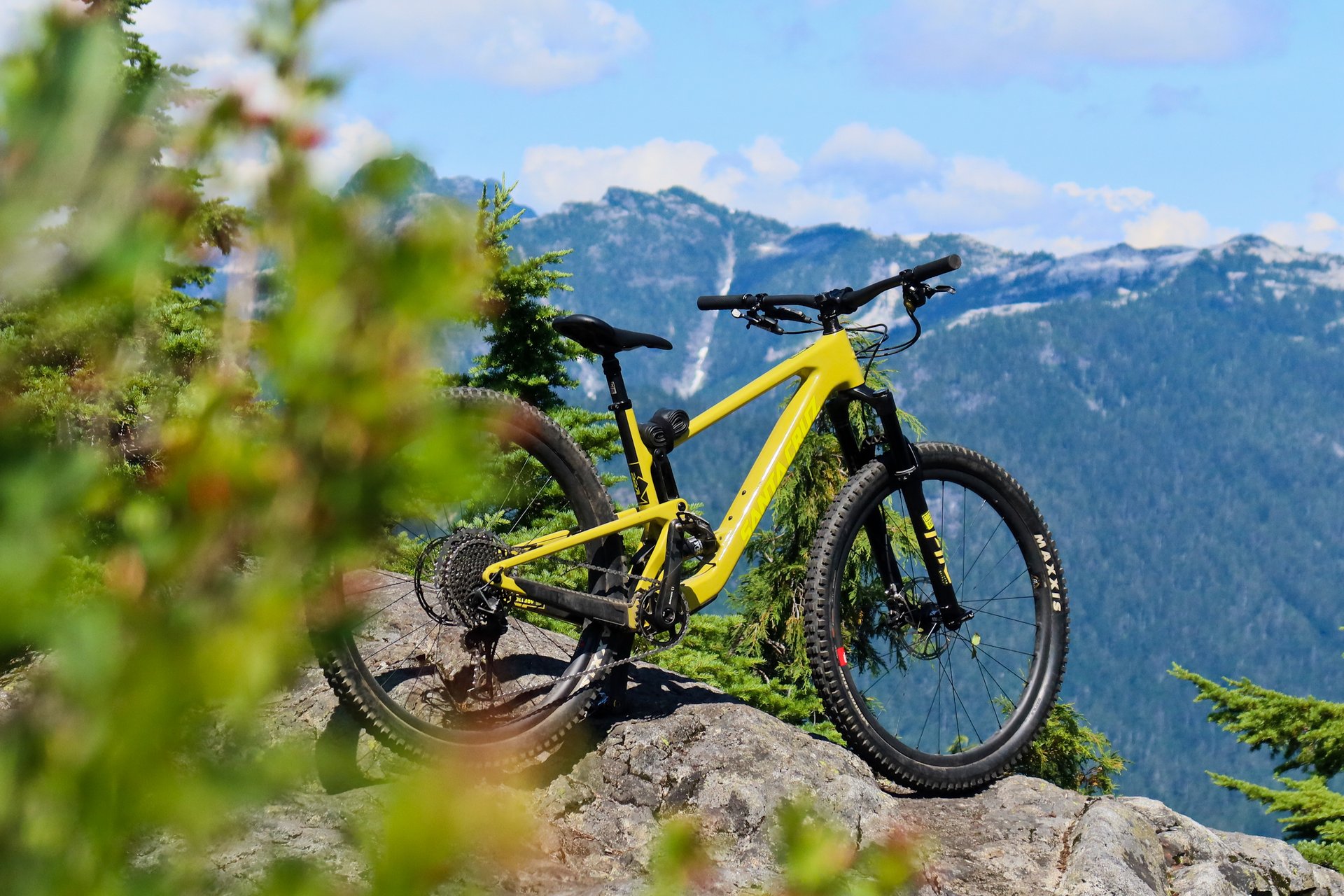
First launched in 2020 the Tallboy IV was ahead of the curve, with very similar geometry to the Top Fuel and Spur. It's a great bike - whenever there's a new one I just hope it goes on a bit of a diet. Photo: Cooper Quinn
Riding the Top Fuel
As you'd expect, the Top Fuel is an efficient climber, and rewards punchy efforts and sit-and-spin periods equally well. The suspension remains active, but in a way where I only rarely used the climb switch and enjoyed the comfort and traction instead. The relatively slack head tube angle (66 degrees) is somewhat offset by a low front end keeping most front end wander in check and making quick work of slow tight corners and technical sections. It's no Canyon Lux, which I stole from Andrew for a couple rides and still holds my personal record for the local No Quarter climb, but the Top Fuel doesn't make many concessions from its XC race roots.
Where bikes like the Top Fuel really come into their own - this newish breed of non-race, shortish travel, aggressively geometried yet ready to pedal machines - is on undulating terrain. While there's significant speed differential on winching climbs, climbs are just hard. Once you're pointed across, the Top Fuel comes alive. Hard pedaling is rewarded with velocity, a significant contributor to fun. The Top Fuel loves a connector trail, and will turn the boring slog back to the pavement (you did ride to the ride, right?) on a connector trail into fun as you pedal into a rooty gap that just looks exhausting if you're sitting behind a Zeb.
Descending, the chassis of the Top Fuel feels surprisingly solid considering the bike's weight; coupled with the progressive rear kinematics, it's confidence inspiring. However, the higher bottom bracket, shorter headtube, and resulting lower stack height are noticeable. When things get steep and rough, it's a conscious effort to stay centered on the bike and appropriately weight both axles.
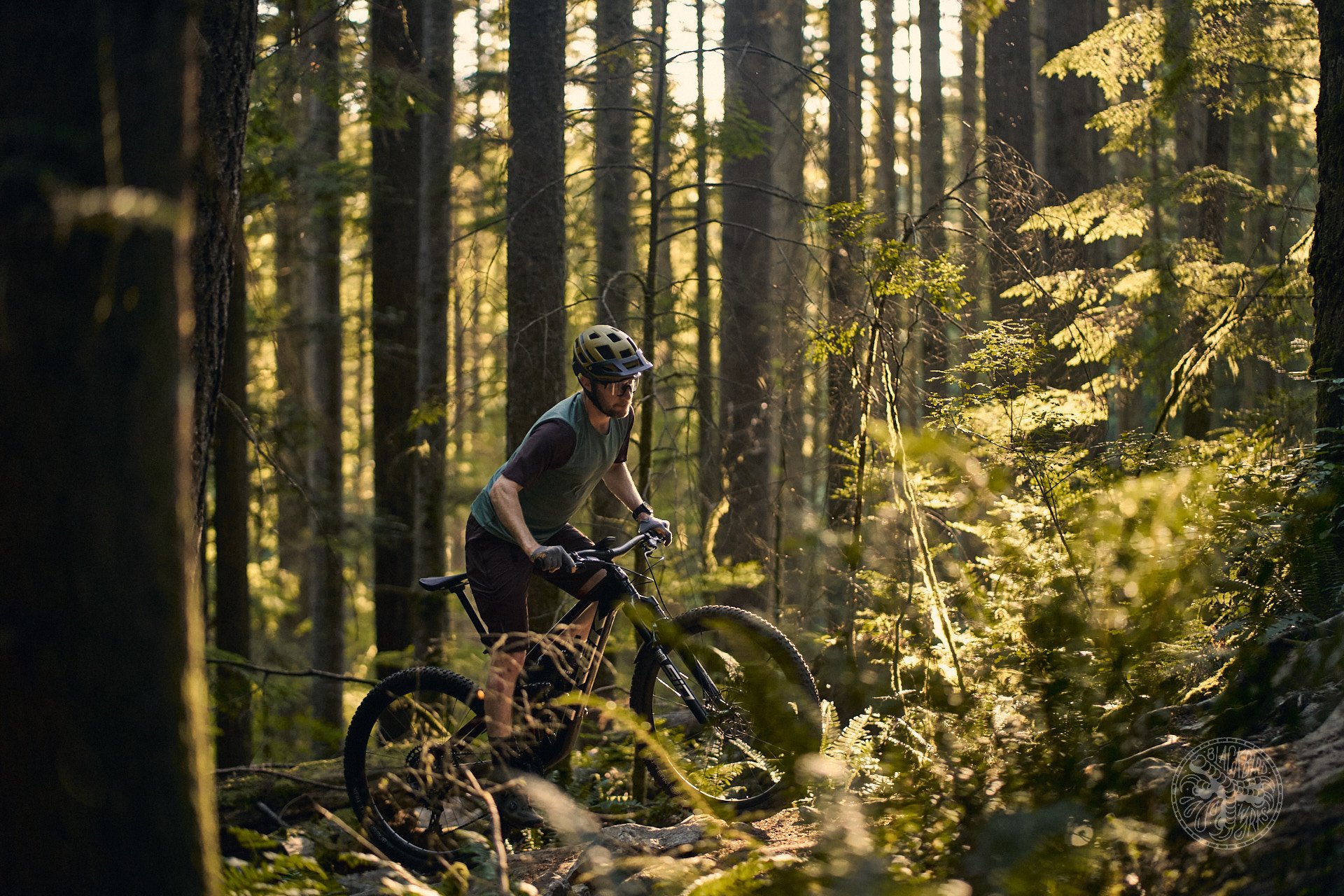
Pedaling up - I have to admit that due to time constraints imposed by a tiny human I drove over to meet Deniz for this shoot after reading Goodnight, Goodnight, Construction Site for the 10,000th time. Photo: Deniz Merdano
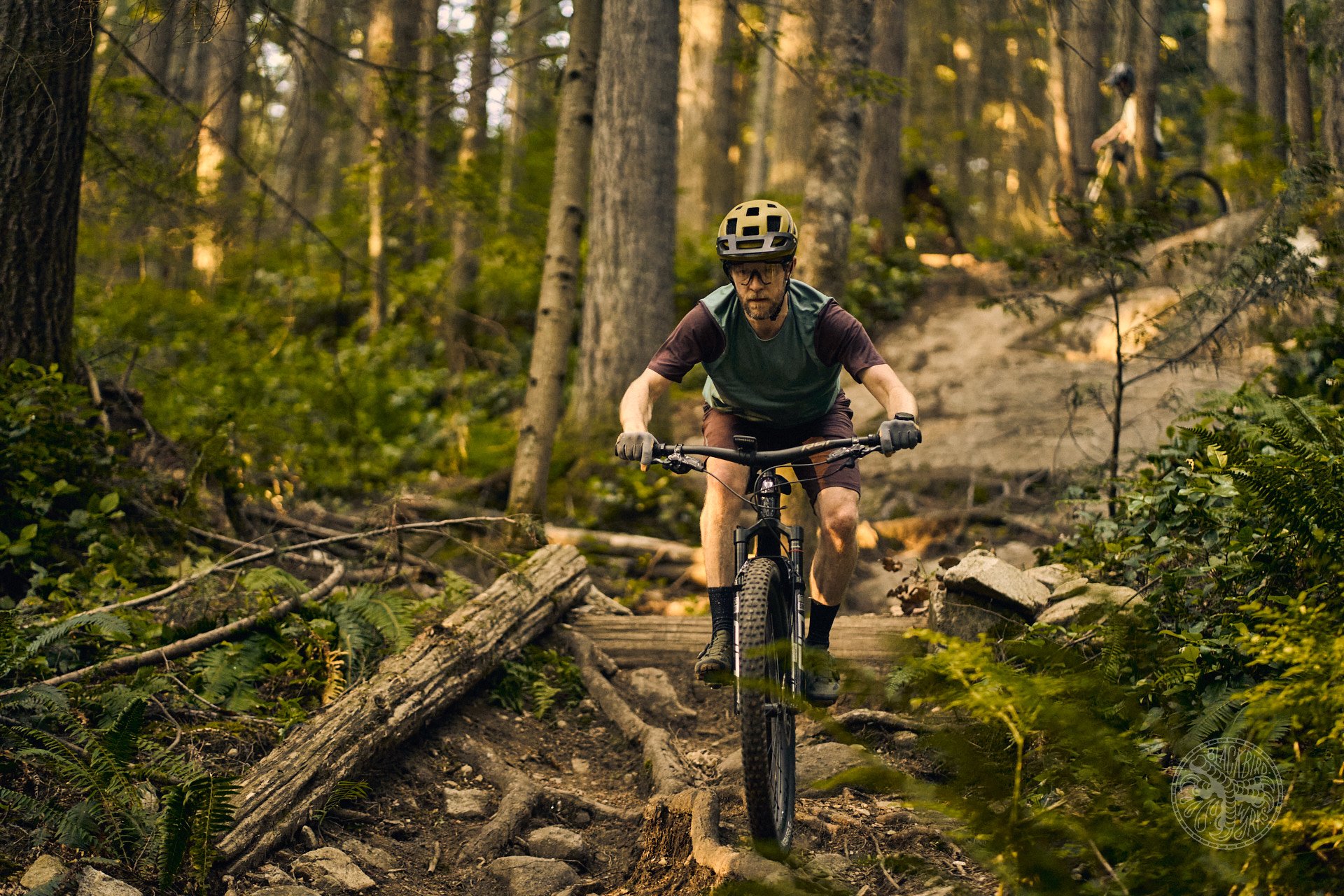
Downhill, if you can keep your nose clean, the Top Fuel will push surprisingly hard. This section colloquially known as the Waterfall can be quite intimidating with an awkward entrance, long steep slab, and very chunky runout. Photo: Deniz Merdano
Top Fuel vs Spur vs Tallboy
The short answer is, "It depends on what you're looking for."
They're all worthy bikes, but there are significant differences. Over a year on with lots more riding on both bikes, I'd stand by my Spur vs Tallboy piece; the Tallboy is a better 'only' bike and the Spur is a fantastic whippet that loves a good flogging. The Spur feels like the liveliest (and flexiest) of the three; both Top Fuel and Tallboy have a more solid chassis feel, and more damped ride. The geometry of the Spur and Tallboy give more confidence when things get ugly - I'd put this down to stack and bottom bracket height. If we're going for all out descending the Tallboy takes the win. This comes at the expense of a less efficient feeling pedaling platform, heavier weight, and like many VPP-equipped bikes I have a harder time getting it off the ground - at least harder than the Spur or the Tallboy - but it's got climbing traction for days. If you're going to stick to the trails these bikes were really designed for, the Top Fuel is the winner. If you're going to make bad decisions like me, I'd pick a Spur or Tallboy. (Mike also has the Rocky Mountain Element out for review - a bike I'd love to throw a leg over as well, and probably falls more in line with the Spur.)
So how do you choose? It's up to you to define your parameters (Yes, "Is this in stock before 2024?" is an acceptable parameter in 2022). Fire away in the comments with your criteria and I'll see if I can help.
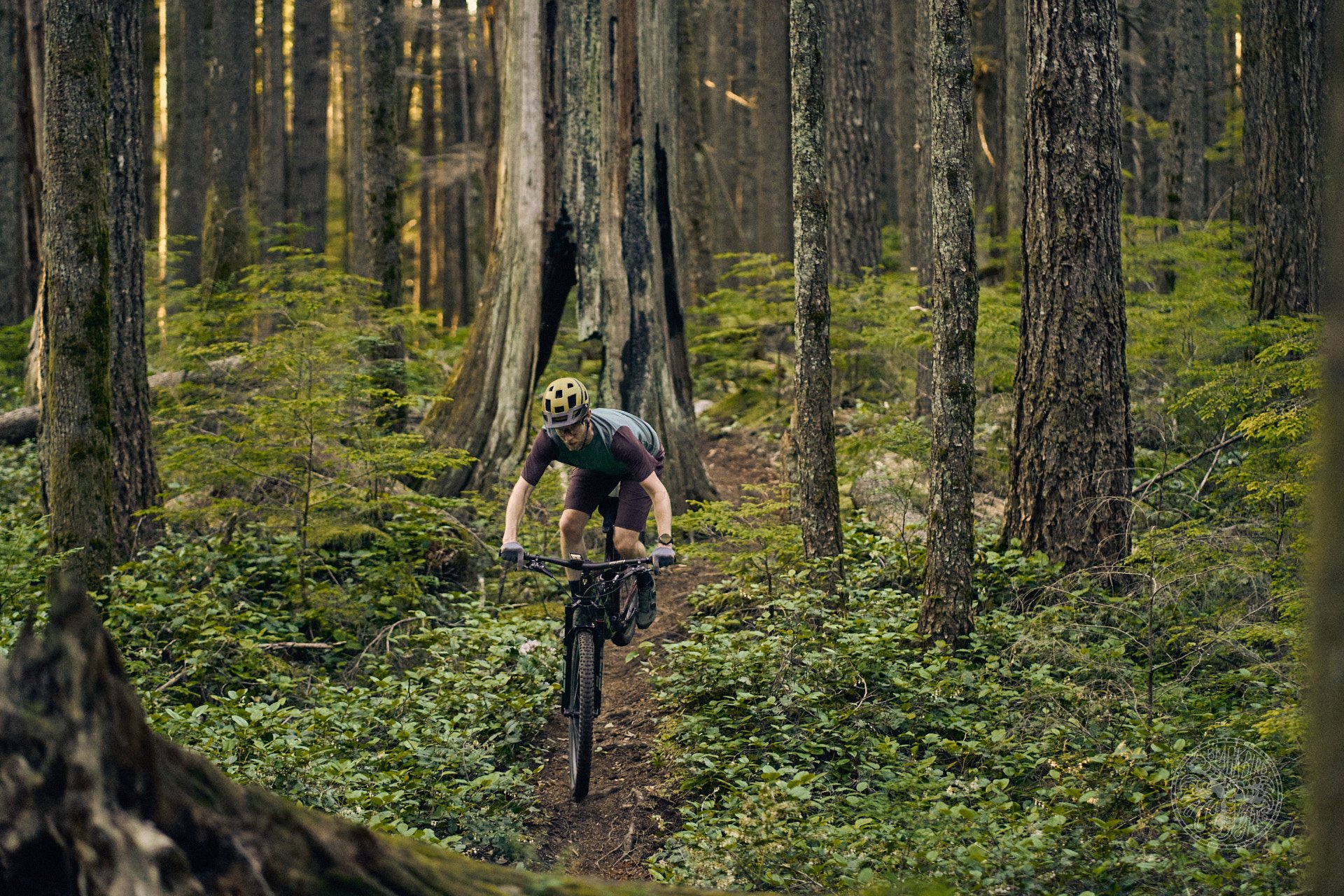
Random trail yanks fall in the 'pros' category for the Top Fuel. Photo: Deniz Merdano
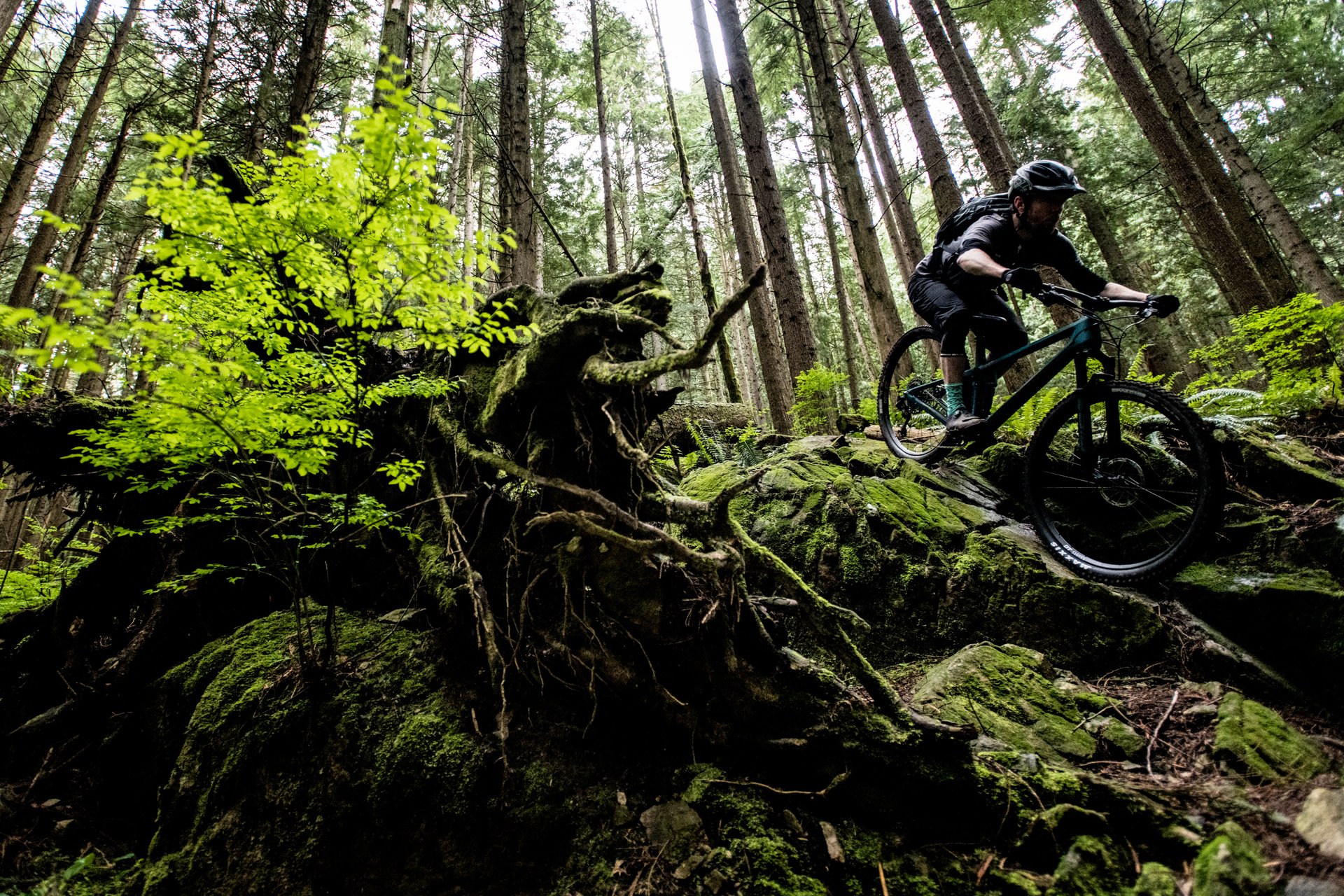
When the going gets real steep, the stack height of the Spur means I'm more comfortable. Realistically here on the Shore on little bikes on little tires, "more comfortable" is a euphemism for "less scared". Photo: Dave Smith
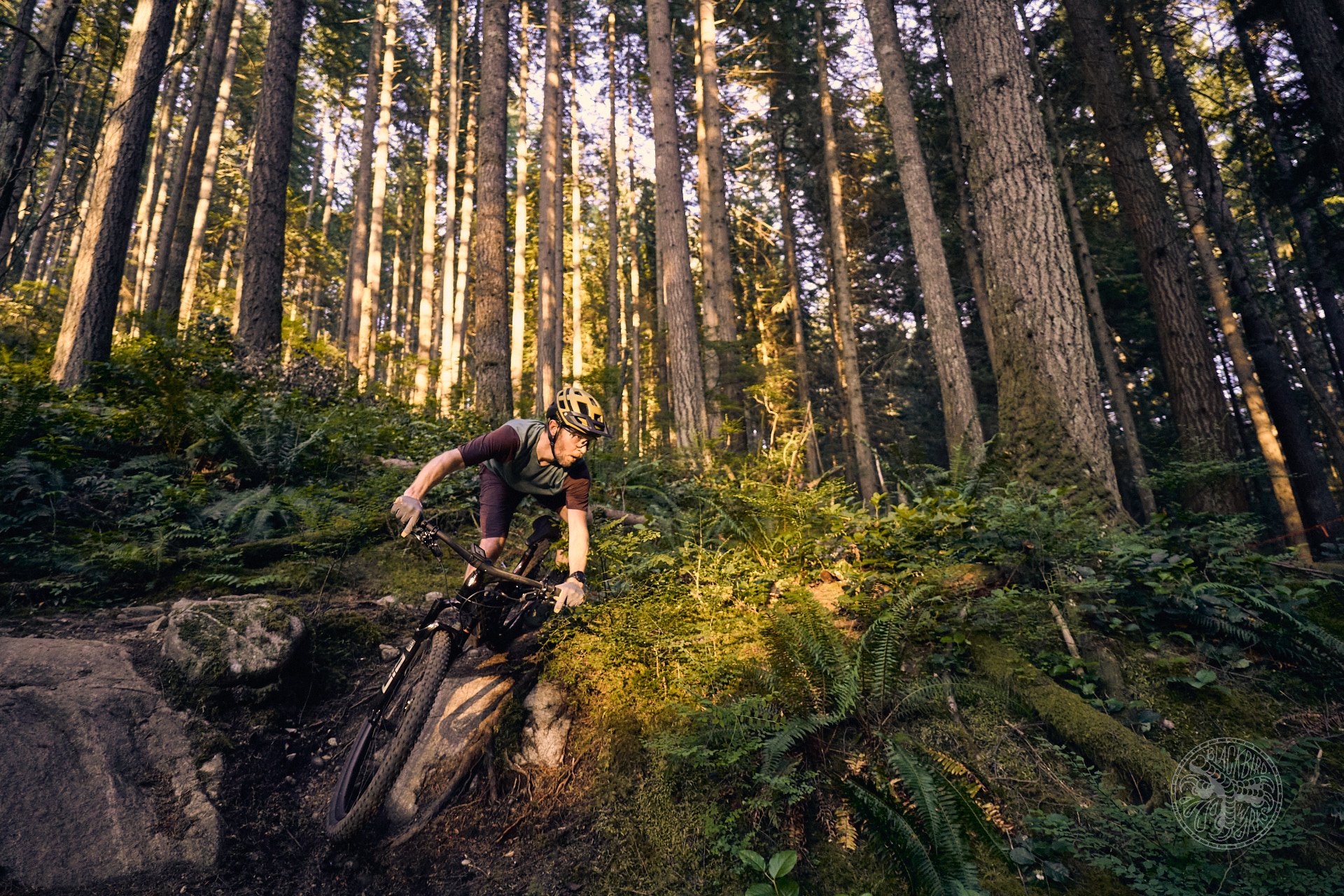
This is the kind of terrain where the Top Fuel really excels - a couple hard pedal strokes here and there and you're carrying real speed. Photo: Deniz Merdano
Conclusion
I've grown quite accustomed to riding bikes of this genre (look, we're trying really hard not to say downcountry here, ok?), but if you're Shore-country curious, you should find a way to put down your Enduro at some point and try out one of these little rocket ships. They're all a blast, you'll be surprised at how fast they climb, how fast they descend, and you'll start finding speed and pulls on undulating terrain you never even considered before. You'll have to learn to keep your speed in check on the rough and steep; there's just not as much room for error, or as much traction. And maybe you'll start riding to the ride occasionally, and taking a couple less shuttle laps here and there. Be careful though, you'll start discovering all the fun there is to be had in alleys, on trails along right-of-way-fencelines, and random kids motocross tracks hidden in the trees you never knew existed. If you keep at it, you might wind up enjoying parts of your trailhead commute, and get that 430 miles in.
Did I ride it to the trailhead 43 times? Well, no. I haven't actually ridden this bike 43 times - but I did make an effort to keep this bike off the truck and absolutely enjoyed it. I'd bet you could do the same on a less expensive, aluminum, less CO2e intensive Trek Top Fuel, too.
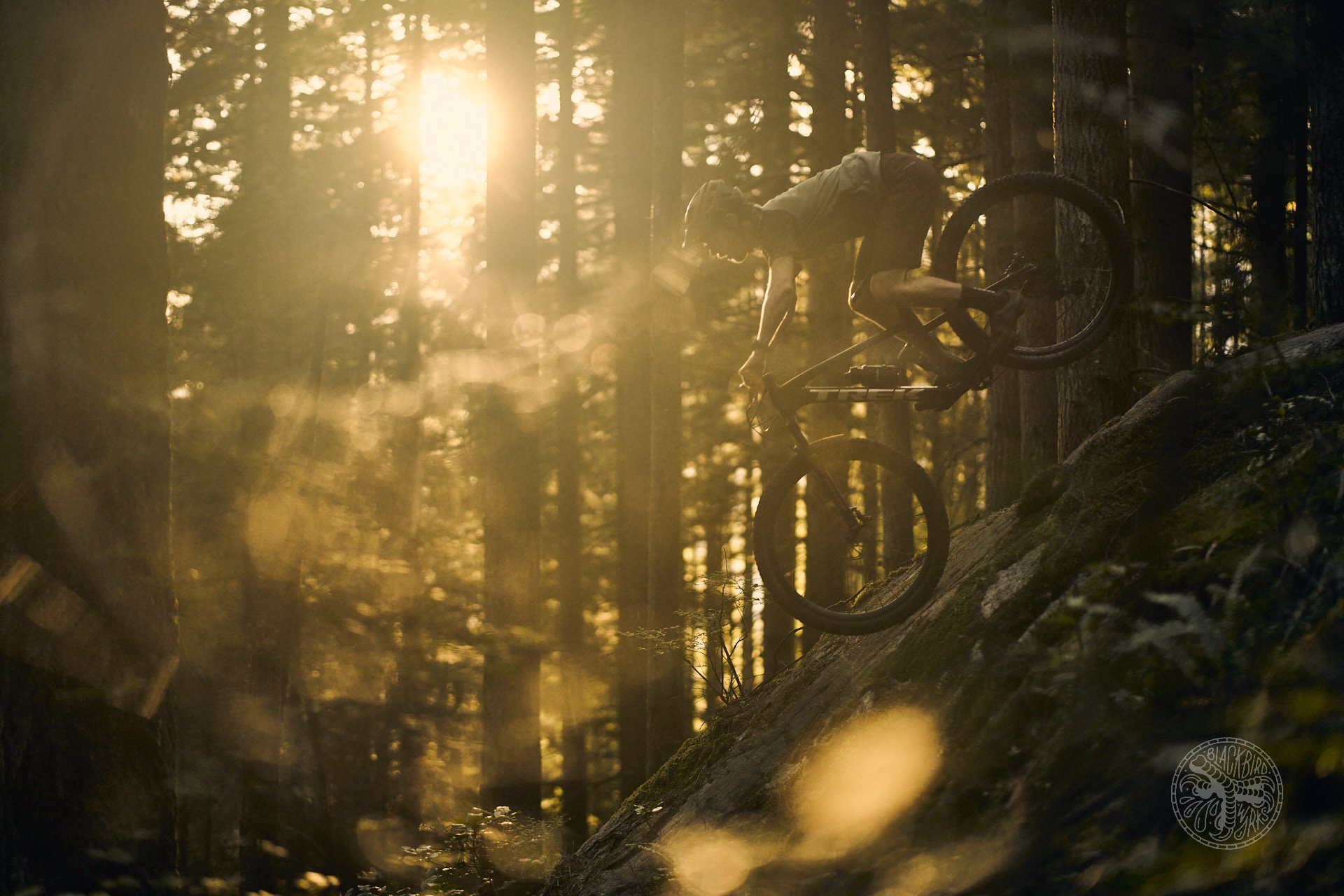
I can't say I'd recommend airing onto the slab, but it worked out. The runout did push the little red stanchion O-ring all the way to the top, though. Photo: Deniz Merdano
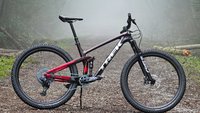
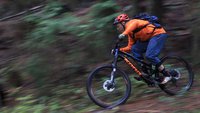
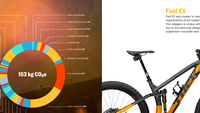
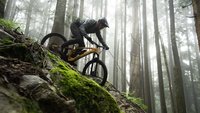
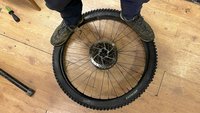

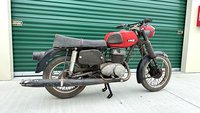
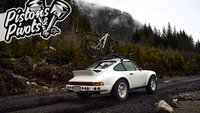

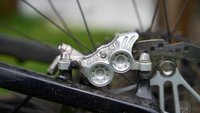

Comments
Geof Harries
1 year, 9 months ago
Ahem. I believe the official term for “little red stanchion O-ring” is “fun meter” :-)
Reply
Cooper Quinn
1 year, 9 months ago
I moved it up until I heard the 'clank' sound.
That's good, right?
Reply
gubbinalia
1 year, 9 months ago
Much as I'll gleefully read any Cooper review on any subject -- including gravel bikes that he adores, budget hardtails that he detests, and "fantastic" salted ales?! -- I applauded extra when I scrolled to the bottom and found that the uber-classic Andrew Major article, "If you can't ride from home, ride from somewhere" had been algorithmed into (chosen for?) the related story bar. AM's words were in my head this morning trying to drag myself out of bed 20mins earlier than needed so I could ride up the road to a 6.45am trailhead rendezvous: "Riding from home is awesome for all the reasons sitting on a bike isn't sitting in a car."
The lightweight//short travel//capable geo//29er category excites me as much as the next recovering XC racer dude, and no doubt the bikes keep getting better and better and the options diversify year after year (remember when the Tallboy II was sort of the only solid option in this category, but it was kinda chonky and still had racey geo?). But what gratifies me more is seeing some acknowledgment in the community -- and in the media -- that mountain bikes are still just bikes: meant for riding on pavement ("transitioning tarmac," ahem), dirt, gravel, washed-out fire road, whatever. If the new breed of light, efficient, shreddy bikes helps more folks cotton onto all the options that the ride-to-the-trails mindset opens up, I'm all ears for whatever silly niche the industry wants to make up as a new term to market them.
Reply
Pete Roggeman
1 year, 9 months ago
Indeed, right now the more interesting gains and changes are being made in the short travel arena. My experience on the Blur was a great reminder both of my own roots as a rider - on bikes intended for XC riding that we modified to suit shore riding, that good geo is critical, and that all proper mountain bikes these days are incredibly capable. And lastly, that a lighter bike that pedals well will inspire you to actually pedal more. Heavier trail and AM bikes are more of a specialty tool than a good XC or lightweight trail bike.
Just don't give 'em dumb names like downcountry.
Reply
Perry Schebel
1 year, 9 months ago
(now that it's well established in the mainstream lexicon) i'm kinda ok that term. more concise that something awkward like "aggressive xc". good to have a differentiator to separate bikes of this ilk & purebred race platforms, and this does the trick?
Reply
Pete Roggeman
1 year, 9 months ago
I'd argue the opposite, for this reason: whatever the actual origin of the term (Ferrentino debunked the fact that it was a Levy invention - originally used decades ago), the modern conventional definition Mike Levy laid out was:
"short-travel, quick handling rigs with a large majority of their DNA coming from the cross-country family but with a clever component spec that adds to their descending and technical abilities without also adding too much weight"
Now, we don't have to hand the reins over to him or say that's the only definition, however that's what he wrote back in 2018. The lemmings in marketing departments everywhere glommed onto it, and that's where the confusion starts. Because now we have bike co's and component companies calling everything they can lay their hands on 'downcountry' and it's confusing as hell. Canyon's Spectral 125 was labeled a downcountry bike, but so was their Lux Trail. Those two bikes have nothing in common other than less than 130mm travel and the word Canyon on the downtube. People also want to call both Santa Cruz Blurs and Tallboys 'downcountry'. Once again, neither one fits that category definition and, to their credit, Santa Cruz does not use the term (btw Blur is definitely a XC race bike even in TR form, and Tallboy is a trail bike - weighs too much to be DC).
It's a vague enough term that its definition has been perverted by many to mean different things to different people. The reason I hate it is because it's causing confusion, which sucks for us in the media but even more for consumers.
Reply
Perry Schebel
1 year, 9 months ago
it's certainly not perfect, but in terms of having a pigeonhole to shuffle bikes that are in the nebulous region between xc whippets & trailbikes it's probably the best we've got for now? categories are always subject to interpretation, but if someone says something is a DC bike, i've got a reasonable idea of what to expect. granted, i do cringe when marketing departments start adopting said lingo...
Reply
Pete Roggeman
1 year, 9 months ago
I guess my objection is more tied to the fact that it's being used for more than one 'type' of bike. If there was better consensus, I'd eventually get over it, just like I did 'enduro' bikes, although I still don't use that term.
Aaaaanyway, it's Friday and I think I should margarita instead of getting too worked up over it!
fartymarty
1 year, 9 months ago
Pete, yeah that makes sense.
DC for me (altho never ridden one but would very much like one) is a short travel aggressive trail bike. The geo is more aggressive than an XC or short travel trail bike but not enduro aggressive. The Spur for me is the definition of a DC bike.
At the end of the day we're splitting split hairs.
Tjaard Breeuwer
1 year, 9 months ago
I agree. Aside from the silliness of the term (which I like), it should be reserved for bikes that derive from an XC frame and shock.
Specialized Epic Evo, Canyon Lux, Scalpel-whatever-it’s-called.
If it has its own (beefier) frame, with a bigger shock and rear suspension not optimized for pedaling, then it’s a short travel trail bike.
Reply
fartymarty
1 year, 9 months ago
Here's my starter for 10...
Short Travel Trail <120mm fork travel
Medium TT<140
LongTT<160
Pete Roggeman
1 year, 9 months ago
Marty, the issue is there are 100 and 120 mm xc bikes and 120mm (perhaps not less) trail bikes. And probably 100/110/120mm DC bikes. So I don't think we can go by numbers alone (same as geo), it'd intentions and the whole package that matters. For me that looks like:
XC (mostly race intention)
DC (XC platform with component mods to add some DH capability but still an xc bike at heart)
Trail - this is a broad category and probably the reason ppl are jumping on DC. I agree with using qualifiers or prefixes and suffixes to help here (light trail, short travel trail, etc).
AM/Enduro - can concede there can be differences btwn the two. My preference is for Enduro to be a bike intended to be raced but just like with XC bikes, lots of people ride bikes you could race, but never race them.
Cooper Quinn
1 year, 9 months ago
I'm not touching the "what's a downcountry bike" discussion with a 20' pole, but y'all are perfectly welcome to keep arguing where the goal posts are on that till the cows come home.
Kelownakona
1 year, 9 months ago
I've heard Levy say a number of times he didn't come up with the term ( he'd heard it before as a joke term from someone at Rocky I think).He just popularised it. And people latched on as it does the job to describe that niche of mtb.
It's less clunky than 'short travel trail bike' which is just painfully anoraky.
Long travel xc bike? Medium travel all mountain bike? Whatever try selling those phrases to a marketing firm
Reply
Tjaard Breeuwer
1 year, 9 months ago
Well, I will have to go back and read Ferrentino’s article again, but certainly Mike Levy using it was purposefully meant to be dumb. And was the genesis of the current popularity. So, as long as I remember that original bike test where he used it, and how funny I thought it was at the time, I am ok with it.
But Cross country trail (a category term Specialized used to use, maybe still do) is better as a descriptor.
Reply
Pete Roggeman
1 year, 9 months ago
I don't like xc trail very much. Again, by combining two categories like that, you potentially cause confusion. Marathon isn't really an event anymore but I thought that was a category name that worked to describe XC bikes intended for long days or riders seeking slightly less racey spec or intentions (slightly heavier tires, slightly more upright geo). Though bikes like the Blur kind of made it obsolete - even in WC trim I found that bike to be perfect for pp gee rides that bled into trailbike territory.
Reply
Lynx .
1 year, 9 months ago
I personally think these bikes should just be called Trail Bikes, because they're about 50/50 in terms of performance up, down and pedal well on flats and rolling terrain, you know, ALL TYPES OF TRAILS, which IMHO is what a Trail bike is sposed to do.
Side note/OT, but like PB, is there a way to just have a feature to hide all the moto content that seems to be finding it's way on here? I have absolutely ZERO interest in anything to do with mountain biking that has an engine, it's not mountain biking anymore, it's motor-biking :-p
Reply
Cooper Quinn
1 year, 9 months ago
Wait, which hardtail did I detest?!?!
Riding from home is great, and the reality is that depending on where you live and time of day, you're not really "saving" any time by loading up the car/truck and driving over. And you're certainly spending more money, not gaining fitness, and then there's the whole CO2 bit.
The Tallboy and probably Process 111 really led the charge here, but I totally agree that the new bikes in the category are really, really cool. (That said.. you can kinda apply that statement to any bike nowadays. Other than the cost, there's zero valid arguments that bikes aren't better than they've ever been.)
Also, I've trademarked Shore Country, so if they want that term, we'll need a royalty agreement.
Reply
gubbinalia
1 year, 9 months ago
Shore Country, indeed... "Born from the Shore Country," to paraphrase Banshee?!
You're right about the Process 111 as an ancestor to this category -- less upforked-XC and more ride-everywhere. In my XC days I would have never considered such a hunky build with an alloy frame, but I saw folks shredding on those 111's on trails that seemed unfathomable on such a sharp-handling bike. (Here in northern VT folks loooove their Konas, too, so there are still a passel of 111's running around.)
Ha, the hardtail -- no, it was the *bottle* you hated, not the bike! I think you were pretty positive about that Canyon hardtail overall.
Reply
Cooper Quinn
1 year, 9 months ago
Oh. Yes.
I'm still annoyed by those bottles - I also complained about them in my Canyon Grizl review!
Reply
Lynx .
1 year, 9 months ago
Gubbinalia, agree on most points except about the TB, geo was still years behind even when they released the V2, it's when Banshee released the Phantom with adjustable geo HTA 67.5-68.5 and Kona release the 111, that I think you have to say this "category" of bikes really took off, 70 as a HTA for a trail bike really wasn't cutting it, even back then with Kona and Banshee releasing their bikes the following year.
I still own, love and ride my V1 Phantom, it's THE most fun bike I have, because it encourages me to want to pedal, whether that's to meet guys to ride 10+ road miles away, or make it a proper ride and hit it all up, road, gravel DT and ST. It pedals well and yet handles the down with aplomb, well actually more than that IMHO and if you want versatility, just have 2 wheelsets shod with lighter weight, less aggressive tyres and more aggressive for bigger/harder hitting days.
Reply
gubbinalia
1 year, 9 months ago
Well said! Cooper Q. already noted the Pr.111 as a predecessor to the modern crop of capable short-travel 29ers, and the Phantom is definitely a good addition to the list. Wouldn't have merited a second look from most XC racers (on weight alone) but it was for sure ahead of its time on geo.
I brought up the Tallboy because, for me, the sine-qua-non of the short-travel 29er was always, (1) can I race it at XC races to my full potential (which, admittedly was rarely above midpack?) and (2) can I set it up with trail tires and a dropper post and go ride with my enduro-racer friends? And the Tallboys I, II, and III were great answers to that question for a few years there. The IV and likely forthcoming V answer Q.(2) all too well and don't quite fit with Q. (1)!
Reply
Cooper Quinn
1 year, 9 months ago
I didn't mention it, but yeah the Phantom was absolutely years ahead of its time.
Reply
Timer
1 year, 9 months ago
That's a bit of an ongoing theme with Banshee. Spitfire, Phantom, Prime, all pretty much at the cutting edge of bike design for their time.
Reply
Hollytron
1 year, 9 months ago
Rode with some island locals in Duncan last week on what would be a very challenging trail if it was moved to my neck of the woods here in Oregon. Steep, loose, narrow with rock rolls. Scary stuff for me on my privateer 141, my pal Matt just charges the whole thing on his top fuel. Damn good riders ya got up there.
Reply
Cooper Quinn
1 year, 9 months ago
Ooooh what did you ride in Duncan? I love that place.
Reply
Andy Eunson
1 year, 9 months ago
It’s funny how we have come to a point in certain sports where we believe "you can’t do that with those". You can’t ski powder in anything less than 110 underfoot but people believe those fat skis carve as well as a gs ski. You can’t descend on a short travel bike but enduro type bikes climb well.
I’m not the best descender around, not even close but my fastest time for ‘’It’s Business Time" is just under 20 minutes on a 120 forked xc race hardtail. Now that trail has three sustained hard climbs into what is mostly a descent which is why that bike was fast.
Great review. When I next wish to buy a new bike I’m thinking something like this might be the ticket. Or just a bit longer travel to be more well rounded. Like an 88 underfoot ski.
I checked out the geometry but as is often the case for me, the reach is too long with the effective top tube too short so I’ll be hitting my knees on my hands on tight uphill corners.
Reply
Cooper Quinn
1 year, 9 months ago
I mean, I still keep a set of real GS skis in the quiver - 67mm underfoot! Its not a perfect analogy to a bike like this, but I certainly follow your point.
There's certainly ample choices in the ski world to find your micro-niche, as we're seeing in the bike world now; comparing a chart of ski widths and radii vs the many bike brands now covering 120-180mm travel bikes in 10mm increments... pick exactly where on the spectrum you want to be.
Reply
taprider
1 year, 9 months ago
I like your point about the hypocritical attitudes about equipment (for example: Enduro/All Mountain bikes can do everything well, but XC bikes suck for everything but Green XC race courses) or is the point that skill matters more than equipment (old straighter narrow long skis work great in powder, you just have to go faster*)
* With an old narrow long GS ski, you could start a run in powder, transition to cut up crud, hit the moguls then carve narrow ruts on ice at the bottom, with easy transitions between conditions. Although, for competition, modern skis would be faster in their respective niches, but an old GS ski would still be faster in a GS race than a modern fat ski (just like a turn of the century DH bike would be faster in a DH race than a modern XC/DC bike).
Reply
Pete Roggeman
1 year, 9 months ago
I've ridden the Blur on double black Shore trails and it was fine - great even - just not super fast. On everything else it rips. But AM bikes on flat or smooth trails, while 'fine' are not very fun. IMO, advantage small bike.
Reply
Joseph Crabtree
1 year, 9 months ago
Recently sold my Blur frameset because I felt the stays were a little too delicate for the kind of terrain it was capable of taking on geo wise and wasn't into breaking another frame.
Also putting a 120 fork on it killed some of the snap that was so much a part of this kind of bike IMHO. It really was designed as a race bike not a DC as they have stated.
The steel frame I've got now (Cotic FlareMax) weighs 2 pounds more but the ride quality is worth it as well as the peace of mind.
Reply
Lynx .
1 year, 9 months ago
As written in another reply, I think these short travel, lightweight bikes with geo more towards descendingesque encourages to push them way beyond what they and there components were designed for. Heavier isn't always necessarily worse if you know you can trust it because of the extra burliness.
Reply
taprider
1 year, 9 months ago
Or do these lighter bikes make you ride lighter and with more finesse? Kind of like alpine style vs siege style for mountaineering, where by being lighter and carrying far less technical gear and safety equipment, climbers/riders can go further and faster (although, FREE SOLO style might be a better analogy for those riders that do highly technical lines on xc bikes without the full face, armour, big brakes or big tires)
Once you start bulking up an xc bike to make it more DH'ish, you lose the plot and begin to STOMP over the land rather than float. Instead you should be modifying yourself to be able to ride more stuff with less, in that you have to be more precise and under control, instead of relying on the bike to save you.
Lynx .
1 year, 9 months ago
@Taprider - well, ideally that would/should be the case, to a point, but when you've got something with the angles some of these do, the possibility to take it donw some steep, gnarly, nasty stuff geo wise is going to lead to even the smoothest person putting some serious loads into these light frames and probably breaking them - there's a reason the weight of carbon frames is now much close to alu instead of the 3-5lbs lighter they used to be in the past.
Allen Lloyd
1 year, 9 months ago
The other bike I would like to hear in this conversation is the Pivot Trail 429. Rode one at a demo last weekend and it was the poppiest bike I have been on in a long time. Pivot's climb amazingly well and going downhill their 120mm of travel felt amazingly well dampened.
For these bikes with low stack heights, could a longer fork make them lots more fun? I hate low stack height so when I read it I usually think, buy a larger size and over fork it.
Reply
Cooper Quinn
1 year, 9 months ago
I spent a fair amount of time on the first gen Switchblade and enjoyed it - but haven't been on a Pivot since they changed their suspension layout around.
It graced these pages here: https://nsmb.com/articles/extended-play/
I mentioned it in my First Look, but Trek does list geo for the Top Fuel with a 130mm fork. The stack is taller (duh?), but it'd still be significantly lower than the other bikes listed here. This configuration would be fun, for sure, but I don't think it'd be gamechanging.
Reply
Lu Kz
1 year, 9 months ago
I'm lucky enough to be spending a few months on a Top Fuel at the moment. It's a 9.8 with a few different spec choices which round out it's price from a bit off $9000 CAD all the way to around $11,000. It's a very nice bike. I'm used to riding pretty nice bikes. But my main takeaway?
Bikes are so expensive it's offensive. I have insurance on all my bikes, and I'm grandfathered on the policy so it costs me a few dollars extra a year on a home insurance plan. But it's up to a max of $6000 per bike. This used to be enough - I enjoyed riding the top end alloy spec or the lowest/second lowest carbon spec. Not that long ago a Trek 9.8 level bike was in the realm of $6500. Now, the replacement cost of the bikes I already own, for some of them, is approaching double that? Crazy. Don't get me wrong, the Top Fuel 9.8 is a hell of a build without changing anything, but whenever I ride it I just can't get over the fact that I don't think the experience justifies the cost. I don't think my experience is really much better than a Top Fuel 8, particularly if you shelled out for a little lighter wheelset to match the acceleration somewhere down the line.
The bike is great, by the way. It has incredible get-up-and-go acceleration and the rear end/middle descends extremely well for the travel. I really liked the tires early season, but now that it's dry and dusty where I am they leave a lot to be desired, particularly out front. I think the frame is held back by the SID, perhaps intentionally. I'd love to try it with a slightly longer Pike or 34 (and maybe a 9.8 Slack-R, but don't tell Trek) and more aggressive front tire and see how close in feel it gets to the Optic I had or my Instinct.
Reply
Pete Roggeman
1 year, 9 months ago
I guess the silver lining is you know you don't ha e to spend the extra $ to be happy. I always refer back to the fact that these high end bikes are somewhat equivalent to exotic cars in that it's similar equipment to what's used at the or near the bleeding edge of racing. That'll always come with a crazy premium. But that doesn't mean it also isn't obscene.
Reply
Lu Kz
1 year, 9 months ago
I guess I'm more harping on bike price inflation. There's certainly feature creep too. Feels like it's gone up a lot more than lots of other stuff. I remember a couple years ago when the Fuel Ex 9.8 hit $7299* (which it remained all the way until end of MY21), for which you got carbon wheels for the first time. That was a justifiable price jump. The 9.8 level jumped another $1,300 since then. I get it - everything's more expensive, shipping, etc. I'm not looking for logic to say why a Top Fuel 9.8 needs to be nearly 9 grand, I get it. I understand what's going on. BUT at the same time....
I don't FEEL like I'm riding a 9-11k bike when I ride it. As I said, "I don't think the experience justifies the cost".
Now, I'm not too well versed in exotic cars, but I'd certainly hope you'd feel more of a difference stepping out of a Toyota 86 and into a 911 GT3 (close to top spec but not quite) than I do when throwing a leg over this close-to-top but not quite spec bike versus one that costs a lot less money.
*I just remembered the first year with carbon wheels included was $6999, and then went up another 300 YOY.
Reply
Cooper Quinn
1 year, 9 months ago
I'd say inflation isn't... unique to bicycles at this point in time. At 6% inflation rates, your $9k bike becomes an $11k bike in basically three years.
Reply
Lu Kz
1 year, 9 months ago
On the other hand, the experience of not starving to death justifies the cost of inflation.
Reply
Timer
1 year, 9 months ago
It's only that the bike went from 7k to 9k at a time when we had well below 2% inflation rate.
By bike industry logic, at 6% inflation it would probably go from 9k to 15k in a year.
Reply
mnihiser
1 year, 9 months ago
I just checked the MSRP on a KTM 450SX Factory Edition; it's not much more than your Trek. I don't see how the cost of high end bicycles is justified when you consider the complexity of just the engine of motorcycle. Trek develops a nice frame and then bolts on someone else's components. Crazy!!
Reply
Cooper Quinn
1 year, 9 months ago
Price volume efficiency, tolerances, materials.... all very different for moto vs cycling.
I'm not saying the price of high end mtb's isn't insane, but its not a very fair comparison to moto.
Reply
Cooper Quinn
1 year, 9 months ago
Yep. I'd suggest you could have the same amount of fun on some of the builds costing half the price of this 9.9, or less.
Reply
Recrider
1 year, 6 months ago
I have recently bought a Top Fuel 5 on special and did my usual trick of removing most of the build kit...
Replaced fork with an X-Fusion Slide 34 Roughcut and replaced wheels with the Kovee Elites. Recycled my beloved Magura Marta SLs for the umpteenth time.
Dropped heaps of weight off and owes me less than a TF 8 while weighing about a kilo less, most of which was in the wheels.
So far quite happy with it.
Reply
Justin White
1 year, 9 months ago
Such review! Much info! And not a single "never", or "always", or otherwise absolute declaration of perfect excellence or complete shite-ness, in describing the ride. Not that it was expected here, but just kinda noticeable compared to the quite hyperbolic reviews I've just happened to read recently across the interwebs. I like it!
Reply
Cooper Quinn
1 year, 9 months ago
I'll include more superlatives next time.
Reply
GSPChilliwack
1 year, 9 months ago
Sooooo…how does “BC/XC” compare with “Downcountry”? :^)
The bike I want is the bike that will shine (for me, at least) on something like the dearly-departed Nimby 50 or Vedder Classic (as a weekend warrior; not podium contender). But I’m not willing to be overly risky with tire punctures, I want to enjoy the climb, and I want decent suspension for a 10+ minute descent.
So I’m going to run a Pike on my Hei-Hei along with a slightly shorter stem and a bit of rise on the bars. No paper-thin XC tires, but things might get a bit “drifty”.
And then I get thinking about having a decent rear shock to replace the SID. And maybe I’m on the wrong bike, after all. But at least I’m much more likely to ride to the trailhead. That saves on gas—especially when I factor in whatever it was I forgot at home and would normally drive back to retrieve. I never forget my helmet leaving from home. Ok, there was that one time….
Reply
Cooper Quinn
1 year, 9 months ago
Top Fuel, Spur, Element, etc... all ideal for something like the Vedder Classic, really. Or NIMBY50. They're BCBR bikes.
Tires have a big impact - and are one of the hardest spec choices - on these bikes, too. I discussed it a bit here, but upgrading is a challenge. And possibly to be somewhat avoided?
Uprated tires might mean you need uprated brakes. Uprated suspension/overforking means you might need more tires. And/or a bigger rear shock to keep pace. Suddenly, you've spent a pile of money, and you kinda just bought the wrong bike. But if you don't upgrade somethings, you're going to (potentially) shred tires, eat bushings, break wheels..... because its all very lightweight stuff. But the geometry says "HARDER".
Its a bit of a conundrum sometimes.
Reply
Lynx .
1 year, 9 months ago
AND this is my problem with this "category" of bike, a lot of the time the geo encourages riding it WAY beyond the limits of the frame/parts on it, it's why despite all the "weight hate" Banshee gets, you don't have to worry, ride their bikes as they were intended, the frames will hold up just great.
Reply
Cooper Quinn
1 year, 9 months ago
But then you wind up in 30lb+ territory. And depending on what's currently on it as stuff swaps around a lot, my 170/160mm Rocky Mountain Altitude is ~31lbs.
My point would be more to not get a case of uprateitis and start putting bigger/burlier parts on it, as then you've just bought the wrong bike. Ride and treat these bikes as they're meant to be ridden (I mean... sorta. As I mentioned... I definitely make some bad decisions.), not like enduro bikes. They're more fun that way, too.
Reply
Lynx .
1 year, 9 months ago
You don't have to preach to me, well at least not to riding them as they're intended with a bit extra and leave build as standard, but never going to move me to the plastic, fantastic side and if that means a 30lb+ bike that's fun to pedal everywhere, don't have to worry about introducing it to rocks, at a reasonable cost to build, then yeah, that's me. Weight isn't the be all, end all, lots of heavier bikes pedal "better" than some lighter bikes and when all's said and done, it's the engine onboard that really is the difference.
[edited to add] We are obviously talking WAY different budgets here, you in the realm of the bike on test, me what most can afford or think is high, <$5,000 U$. Say that as my friends SB150 with F38, FloatX2 and all XT weighs over 33lbs and that thing still cost over $8500 US IIRC.
Reply
Cooper Quinn
1 year, 9 months ago
Oh yeah - I mean there's some places you can change weight without really changing cost, like tires. And some of it comes down to preference; I can generally get away with EXO+ tires and/or lighter wheels whereas other folks can't.
But mostly, you're moving away from the "cheap" corner of the "cheap light strong" ternary diagram if you want to build a lighter bike.
(and my altitude is heavier than that right now - heavier tires for summer, and a Zeb because bike park)
Perry Schebel
1 year, 9 months ago
holy damn, the altitude is light. the SC mega is 4lbs heavier (with carbon wheels & exo+).
Reply
Cooper Quinn
1 year, 9 months ago
Keep in mind its an absolutely top end build, with EXO+, and no inserts.
Jimsting
1 year, 9 months ago
Thanks for the review. Good read!
I’m seriously considering a TF 9.8 now after my Blur TR order got delayed. I had been hoping to use that for this years BCBR, but that’s not an option for me now. What are your thoughts on the Top fuels fit for multi-day xc events like the BCBR or Singletrack 6? I’m not ever going to win these events, but all the same would still like to show up as best I can, and a bike that will reward me for all my efforts etc!
Reply
Please log in to leave a comment.